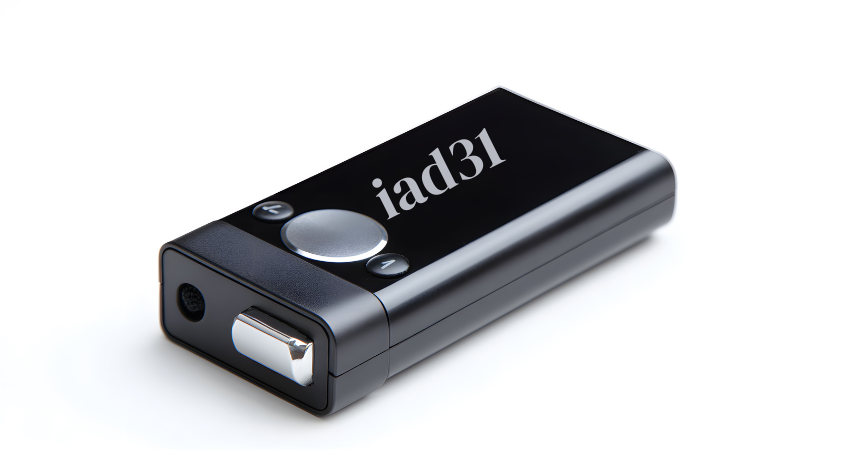Ever wondered what “iad31” really is? Imagine it as a specialized approach, tool, or framework that simplifies complex tasks, turning chaos into clarity. At its heart, iad31 is about efficiency, precision, and a smarter way to tackle challenges. Think of it like having a universal remote control: instead of juggling multiple remotes (methods), iad31 brings it all under one system, saving time and frustration.
In simple words, iad31 isn’t just another tech buzzword. It’s an evolving set of strategies and techniques that people across industries use to make smarter decisions, solve problems faster, and innovate without reinventing the wheel each time. What makes iad31 unique is its blend of simplicity and depth—you don’t need to be a tech genius to start, but the more you learn, the deeper and more powerful it becomes.
People often confuse iad31 with traditional systems or outdated models, but the truth is, it’s built to adapt. Whether you’re a beginner exploring the basics or a seasoned pro refining your skills, iad31 offers layers of insight that grow with you.
So, why bother learning it? Because in today’s fast-moving world, those who master iad31 aren’t just keeping up—they’re setting the pace.
The Origins and Evolution of iad31
Iad31 wasn’t born overnight. It emerged from years of refining ideas, combining old frameworks with fresh perspectives, and driven by the need for something better. In its earliest form, it started as a niche approach among specialists who needed a faster, leaner way to work.
Over time, its creators and early adopters recognized patterns that worked universally, not just in one field. They began documenting best practices, sharing them through workshops, blogs, and online forums. As more people joined the movement, iad31 evolved into a recognized methodology.
What’s fascinating is how iad31 has stayed relevant. While technology changed, its core philosophy—simplicity over complexity, results over process—remained unchanged. It’s this flexible foundation that allows iad31 to integrate new tools, software, and emerging trends without losing its identity.
Today, from small startups to multinational companies, you’ll find professionals quietly using iad31 to streamline operations, boost creativity, and drive results.

Why iad31 Matters Today
In a world drowning in data, information, and endless “solutions,” iad31 cuts through the noise. It offers a clear, repeatable process to solve problems quickly and effectively. Instead of chasing trends, you focus on what truly works.
But it’s more than just saving time. iad31 empowers you to think critically, adapt quickly, and build systems that scale. Whether you’re running a business, working on creative projects, or just looking to become more productive, mastering iad31 means staying relevant and competitive.
Think about it: businesses that adapt survive. Professionals who keep learning thrive. iad31 helps you do both.
The Core Principles Behind iad31
Key Concepts That Shape iad31
To truly master iad31, you need to understand its core principles. At its center are a few key ideas:
-
Simplicity: Avoid overcomplicating. Focus on the essentials.
-
Adaptability: Stay flexible to new tools and methods.
-
Outcome-driven: Prioritize results over rigid processes.
-
Continuous learning: Always refine and evolve your approach.
These principles aren’t just theory—they guide how you apply iad1 in real situations. For instance, instead of building the “perfect” plan that takes months, iad31 encourages quick, actionable steps you can improve over time.
The Science and Logic Underpinning iad31
Iad1 isn’t magic; it’s built on solid logic. Think of it as a blend of systematic thinking, agile methods, and data-informed decisions. By structuring problems into smaller parts, testing quickly, and adjusting, you move faster without sacrificing quality.
Psychologically, iad1 leverages how our brains naturally work: we’re better at tackling small, clear tasks than massive, undefined challenges. This is why practitioners often see huge productivity gains—they stop getting stuck and start making progress.
“Why does this matter?” you might ask. Because knowing the why behind iad31 helps you trust the process, even when results aren’t immediate. Like any skill, mastery comes from repetition, feedback, and reflection.
Step-by-Step Framework to Master iad31
Laying the Foundation: Getting Started
The first step to mastering iad1 is understanding where you stand. Here’s how:
-
Assess your goals: What do you want iad31 to help with?
-
Learn the basics: Start with introductory guides, videos, and workshops.
-
Set a simple project: Apply iad1 to something real, not just theory.
Start small—a side project, a work task, or even personal productivity. The goal isn’t perfection but familiarity.
Next, build habits around iad1. Allocate 15–30 minutes daily to learn, practice, or reflect. Over weeks, this builds momentum and makes iad31 second nature.
Lastly, join communities. Engaging with others accelerates learning. Ask questions, share wins, and learn from mistakes.
Intermediate Strategies to Boost Your Skills
Once comfortable with the basics, level up by:
-
Experimenting with advanced tools or templates.
-
Collaborating on group projects to see iad1 in different contexts.
-
Seeking mentorship from experienced practitioners.
At this stage, start documenting your process: what worked, what didn’t, and why. This habit transforms lessons into repeatable strategies.
Also, challenge yourself with bigger, more complex projects. The point is to stretch your skills while staying true to iad31’s core principles.

Advanced Techniques for True Mastery
At advanced levels, mastery isn’t just about doing—it’s about teaching and innovating.
-
Create your frameworks: Customize iad1 to fit unique challenges.
-
Contribute to the community: Share insights, write guides, or host workshops.
-
Stay ahead of trends: Follow industry updates and experiment with new tools.
Advanced users often blend iad31 with other systems, creating powerful hybrids tailored to specific industries or problems.
Most importantly, never stop reflecting. Even experts run regular “retrospectives” to refine their methods.

